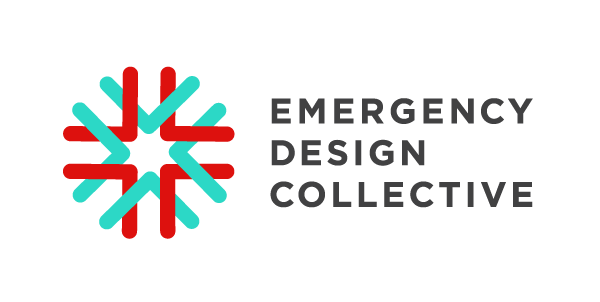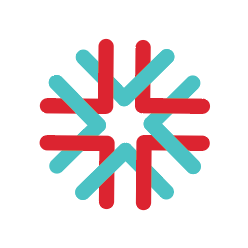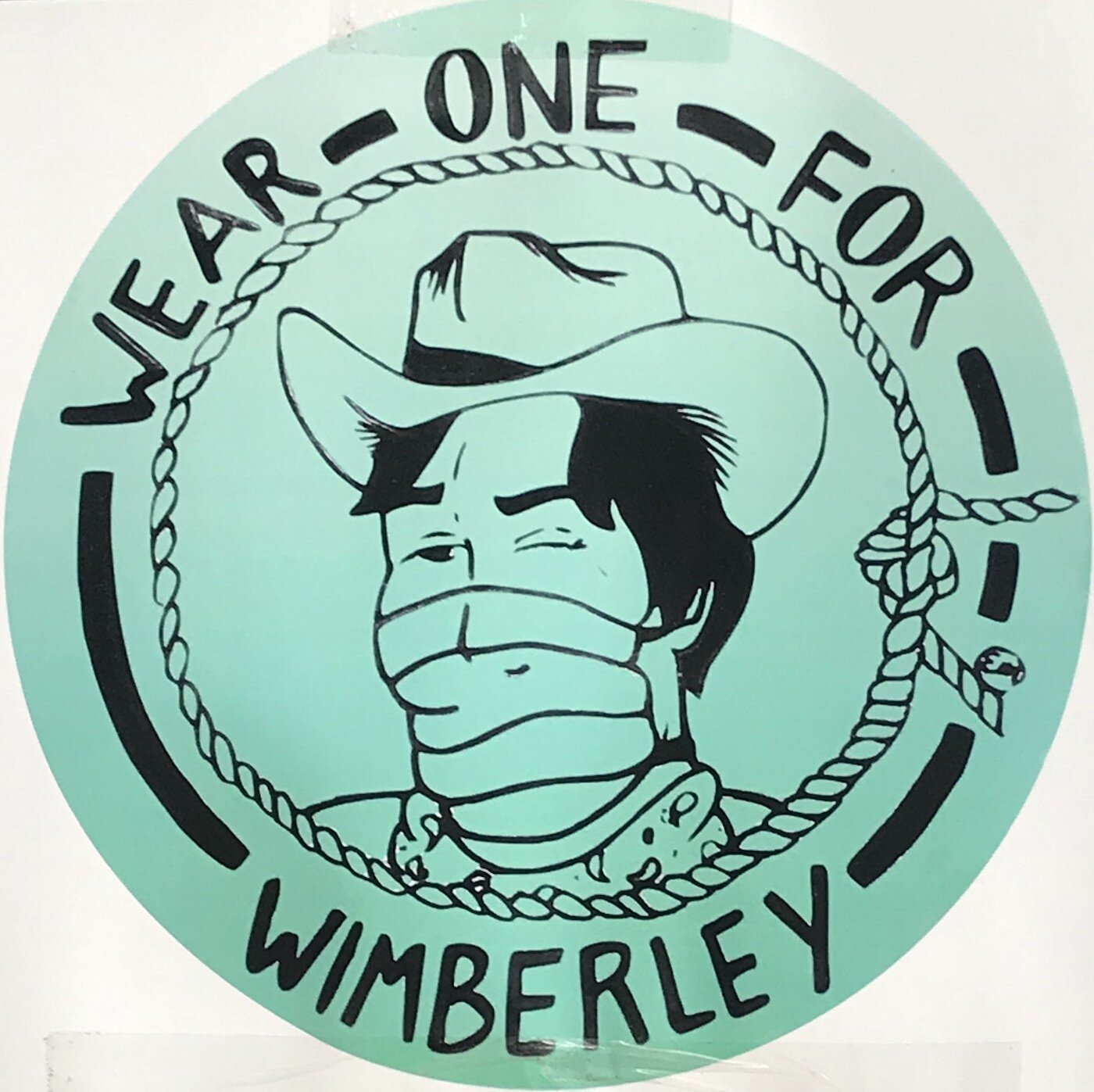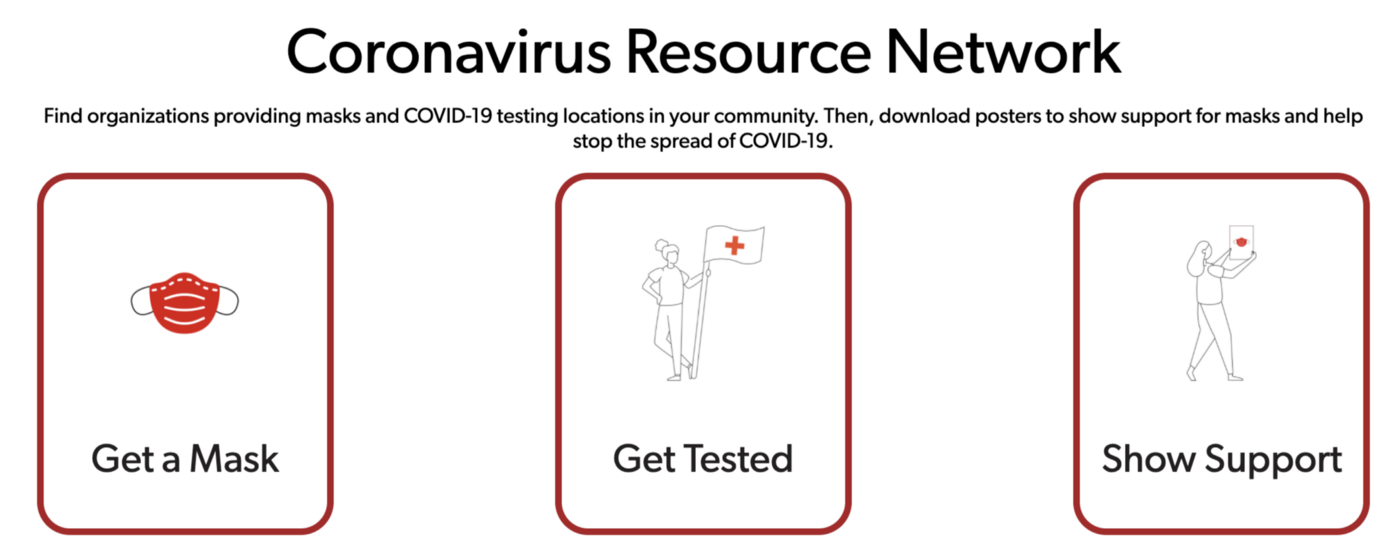Creating a resource network for the Coronavirus — a UX case study
Coronavirus Resource Network poster. Illustration by Dorothy Monares.
In the early months of 2020, when COVID-19 was first starting to spread throughout the world, few people could predict the degree to which life would soon change. Lockdowns, contact tracing and social distancing were put into effect; entire industries closed down, schools transitioned to online learning and remote work became widespread. Essential workers, meanwhile, continued to treat the sick and stock grocery shelves, risking their health to ensure the wellbeing of others.
Masks were in short supply in the US, leading authorities to discourage their use outside of medical facilities. This led to confusion regarding their efficacy, compounded by conflicting reports and studies. Although health officials eventually embraced mask use as an effective way to slow the spread of COVID-19, President Trump and other political leaders publicly disagreed. Masks were politicized, representing an affront to some citizens’ conception of freedom. In many states across the country, government officials have refused to enforce rules requiring mask adoption in public places.
Now, in many parts of the world, life has begun to return to normal: restaurants and retail have reopened, people can once again get haircuts and visit the gym, and schools are returning to in-person instruction. But in America, cases continue to rise.
How might we increase mask access and adoption in low-income communities?
COVID-19 poses risk to all people who come in contact with it. However, not all populations are equally at risk. Studies have shown that those with pre-existing conditions such as obesity and diabetes are more likely to suffer severe symptoms, and risk of fatality increases with age.
Low-income populations are also at risk. On average, essential workers make 18% less than all other occupations. Thus, those who work these “essential jobs,” which include retail and service businesses such as grocers and mechanics as well as jobs in construction, manufacturing, and agriculture, tend to be a part of lower-income communities.
Low-income families also have higher rates of childbirth, and families of color, often the group most likely to be working low-wage and essential work, live in multi-generational homes more frequently than their white peers. Thus, low-income workers are more likely to live in multi-person households where social distancing is more difficult. Because coronavirus spreads via airborne pathogens, sharing close quarters indoors increases risk of transmission.
Knowing that masks have been shown to significantly decrease the spread of COVID-19, the Emergency Design Collective set out to learn more about how low-income communities access masks and the obstacles to adoption that these communities face. Our team’s goal was to determine ways to improve mask adoption to help slow the spread of COVID-19 in these vulnerable communities.
Our Approach
We took a human-centered approach to address this challenge, conducting primary and secondary research to inform design efforts. Broad, informal interviews allowed us to gain an initial understanding of the issues regarding mask creation, distribution, access and adoption in the US. We were able to broadly map the ecosystem and identify the primary stakeholders involved in mask creation, distribution, and adoption by speaking with eight mask creators, vendors, nonprofit administrators and activist/organizers in Austin, TX; Cleveland, OH; Marin, CA; San Diego, CA; and San Francisco, CA.
We also conducted a survey with 50 individuals in cities across the US to get a sense of the problems people face regarding mask access and use, as well as specific problems that users, particularly users in low-income communities, struggle with. Although our survey was not exclusively aimed toward low-income participants, roughly one-fifth of our participants reported a household income of less than $40,000 per year. Of these respondents, we spoke to one young man in Pittsburgh, PA, to learn more about his attitudes and behaviors. (Attempts to conduct interviews with other survey participants were unsuccessful).
In addition to primary research, we reviewed articles, blog posts, websites and podcasts that discussed mask use and adoption attitudes and behaviors, and we reviewed current medical guidelines and safety protocols related to mask use in response to COVID-19.
Our Findings
We identified the following five key insights from our research.
1. People gain a false sense of security from inappropriate face coverings and masks worn incorrectly.
Not all face coverings are created equal, but people often think they are. Therefore, people will wear bandannas or neck gaiters thinking they are effective, when they are much less effective than masks (and neck gaiters have been found to be worse than not wearing a face covering at all). People will also wear masks incorrectly or wear masks that do not fit their face. These people often think they are behaving safely and put others at risk by engaging in public activities without proper protection.
2. There is no effective feedback loop between mask makers and consumers.
We found that some mask makers are creating masks without particular users in mind, which can have several consequences. First, the masks may not be tailored to meet the user’s needs regarding size, fabric, filters, and other factors. Second, these makers are divorced from mask demand; they create masks and then donate them to nonprofits who they trust will deliver them to those who need them. They have no way of ensuring the masks are distributed, and only those connected to nonprofit networks can then access them.
3. Mask distribution is like the Wild West and lacks coordination.
Very few organizers are involved in the thoughtful distribution of masks. Therefore, little attention is paid to ensuring those receiving masks are those most in need. In addition, those who are able to purchase or request masks do not always work with makers located closest to them. Long mail and delivery times can lead to increased exposure for those waiting and contribute to overall inefficiency in mask distribution efforts. And if mask makers also are responsible for delivery, the number of masks they are able to create diminishes.
4. People conform their behavior to the attitudes of their social networks.
Surveys and interviews indicated that mask wearers adapt their behavior to match their peers. Being around others wearing masks inspires mask wearing; being around others who do not wear masks reduces mask use. This has important ramifications regarding the efficacy of social pressures to increase mask adoption.
5. Mask wearing cannot be enforced for those who are against it.
Although social pressure contributes to mask adoption, some people are adamantly against wearing masks. We have seen through reports of retail workers being attacked for trying to enforce mask use that there is a percentage of the population that will not conform to any mask regulations, regardless of the consequences. Due to the politicized nature of the issue and the anti-mask rhetoric of political leaders, there is even less reason to believe that complete mask adoption can be implemented. Therefore, we have determined that it is important to focus on assisting those who actually want to be protected.
Brainstorming Ideas
With these insights in mind, we began to brainstorm ideas for how we might increase mask access and adoption in low-income communities. We came up with ideas individually, then grouped them, combined them where appropriate, and further elaborated upon them. From our synthesis, we identified three key opportunity areas with unique goals and challenges:
EducateGoal: To ensure that all people know where to procure a mask, either by paying for one or through donation, and to inform people of how to wear masks correctly.
Challenge: How might we craft a message and medium that resonates with different members of different communities, and low-income communities in particular?MotivateGoal: To cultivate pro-mask-wearing attitudes via public displays of support.
Challenge: How might we combat anti-mask narratives in communities that are not currently convinced of the importance of masks?CoordinateGoal: To connect mask makers and distributors to those in need while helping to increase transparency and improve efficiency in distribution.
Challenge: How might we better facilitate coordination between different stakeholders?
When we finished brainstorming, we plotted our design ideas on a 2x2 grid arranged across axes of impact and efforts. Our most fruitful ideas were both plausible (low-to-medium effort) and impactful (medium-to-high impact). Our top ideas included the following:
A website that allows users to find free mask providers in their area.
Communication materials for download to show support for masks in users’ communities.
Downloadable mask-wearing instructions for print on masks, grocery bags, or other materials.
A volunteer laundry/sanitization service for masks, promoted in low-income communities.
A clothing barter where old clothes can be donated to volunteers who could them into masks.
Upon discussion, we realized that we could combine our first and second ideas. This would allow us to prototype solutions that address all three of our key opportunity areas: education, motivation, and coordination.
We have seen variations of these ideas implemented already in different communities. The Austin Mask Exchange is a volunteer-run website that local mask makers put together to better coordinate efforts on creating and distributing masks. The website features a list of vendors selling masks, for those who wish to support local businesses. It also features a “Request a Mask” service for those unable to afford masks. The volunteers create masks upon request based upon specifications outlined by the user. This ensures that masks are suited to fit the user’s needs. The website also features educational materials regarding different types of masks and proper mask-wearing instructions, so that users can make educated decisions.
And in Wimberley, TX, a small town an hour outside Austin, a local campaign has been implemented to promote mask use. Posters featuring a winking, masked cowboy that say “Wear One for Wimberley” have been put up in storefronts and in public areas. This campaign was discovered late in our design process, and therefore we were unable to interview anyone involved to learn more about its success. Nevertheless, the posters demonstrate that communities are already exploring ways to organically build pro-mask support.
“Wear one for Wimberley” graphic displayed around Wimberley, TX (artist unknown).
Prototyping and User Testing
To create the website, we first built out wireframes and established the information architecture. We quickly realized that we could improve our idea by featuring local testing locations in addition to local mask providers. We researched mask providers and testing locations in the following cities to be included in the prototype: Austin, TX; Cleveland, OH; San Diego, CA; San Francisco, CA; and Salem, OR. We coded the website so that, by putting in their zip code, users could pull up links to all mask providers or testing locations in their area. The website would indicate if masks were available for free or purchase. We hoped to categorize testing locations similarly, but found qualifications regarding insurance and eligibility to be too complicated to accurately compile.
The graphic design of the website was guided by Dorothy Monares’s illustrations, which were also used to create downloadable communication materials that promote mask use and point viewers to the website.
We coded the website and tested it with three users to observe how they intuitively interacted with it. We questioned them on how useful they found it and their ideas for improvement. Their feedback included the following:
Links to resources should open in new windows
Desire to enter zip code only once to find all relevant resources
Desire to see more information about mask providers (e.g., if they donate masks with purchase)
Desire to see more information regarding testing locations (e.g., address, hours)
Results should include a disclaimer indicating that all local resources may not be provided
Confusion regarding our “Get Involved” section — expectation of volunteer opportunities, as opposed to posters for download and display.
This feedback was instrumental in building a second version of the website, which we have dubbed the Coronavirus Resource Network (www.coronavirusresourcenetwork.com).
Next Steps
We have created a blueprint for a third iteration of the website, which would include more changes identified via feedback as well as Spanish and Chinese translations. These changes will require more time to research and more advanced coding. We are hoping to expand our team so that we can build these changes out and test them with additional users in the coming weeks.
It is our vision that the Coronavirus Resource Network can serve as a nationwide resource not just for low-income communities, but for everyone looking to easily find masks and local testing locations. There is also potential to build the website out further to provide additional resources, in the model of Aunt Bertha, but with specific focus on assisting those affected by COVID-19.
We hope that users will add information for resources in their own communities via this Google Sheets spreadsheet or notify us by emailing admin@coronavirusresourcenetwork.com. This way, we can continue to improve the accuracy of our search results and provide benefits to more communities across the US.
We welcome additional feedback and support. We know that volunteer efforts continue to be our best line of defense in protecting our communities from COVID-19. We are inspired by all of the hard work that activists are doing in our communities, and we hope that the Coronavirus Resource Network will be an additional tool that can help us, together, stop the spread of COVID-19.
Our Team consists of Sean Tomas Redmond (project lead), Maneesha Panja (project manager), Justin Thach (core design) and Davina Doud (core design and website developer), with additional support from Stephanie Wu. We give special thanks to Ana Reza-Hadden for her support and guidance.
Emergency Design Collective is a group of doctors, designers, makers, and academics working on future problems and right now solutions to the global pandemic. We are responding to challenges at home, in our communities, and in healthcare.







